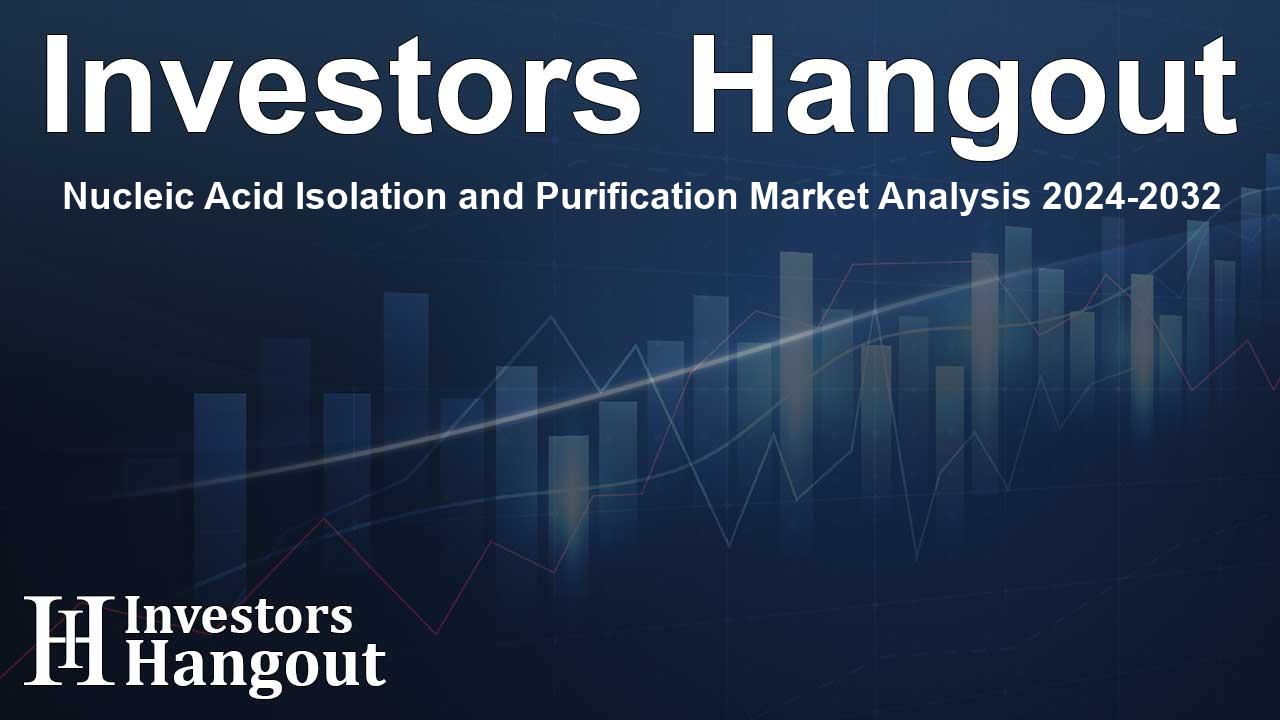Nucleic Acid Isolation and Purification Market Analysis 2024-2032

Understanding the Nucleic Acid Isolation and Purification Market
The nucleic acid isolation and purification industry is poised for substantial growth, with projections indicating a rise from USD 6.60 billion in 2023 to an impressive USD 16.38 billion by 2032. This growth translates to a compound annual growth rate (CAGR) of 11.18% during the forecast period from 2024 to 2032. Such rapid expansion is largely driven by an increased demand for genetic testing, personalized medicine, and advancements in molecular diagnostics.
Key Market Drivers
The surge in demand for genetic testing is a significant catalyst for the growth of the nucleic acid isolation and purification market. As healthcare shifts toward personalized medicine, the need for precise genetic information becomes increasingly critical. Automation technologies and advancements in bead-based technology are further enhancing the efficiency and sensitivity of nucleic acid purification processes.
Impact of Automation Technologies
Automation plays a transformative role in the nucleic acid isolation and purification landscape. The introduction of automated systems not only streamlines laboratory workflows but also enhances reproducibility in results. Automated liquid handlers and magnetic-bead extraction devices have become essential tools, especially in high-throughput environments such as research institutions and diagnostic laboratories.
Market Size and Regional Insights
In the U.S. alone, the nucleic acid isolation and purification market was estimated to be valued at USD 2.15 billion in 2023, with expectations for it to reach USD 5.13 billion by 2032, at a CAGR of 9.44%. This growth is supported by the nation's advanced genomic infrastructure and substantial investments in molecular research.
Major Players Shaping the Industry
The market is characterized by the presence of numerous key players that significantly influence growth and innovation. Companies such as QIAGEN, New England Biolabs, and Thermo Fisher Scientific, Inc. are at the forefront of providing revolutionary solutions in nucleic acid isolation and purification. Their continued focus on developing advanced kits and instruments remains critical to meeting the evolving needs of the biotechnology and pharmaceutical sectors.
Segment Analysis
The nucleic acid isolation and purification market can be segmented by product, type, method, application, and end user. Among these, kits and reagents dominate the market due to their widespread application in clinical diagnostics and research laboratories. This segment holds a substantial share of the market, accounting for approximately 68% of total sales. The convenience offered by these products is a driving factor for their popularity.
Instruments Segment Growth
The instruments segment is anticipated to register the fastest growth during the forecast period. Innovations such as automated extraction systems provide significant efficiencies in processing time and accuracy. This evolution is attracting investments in research and development, driving further advancements in nucleic acid purification technologies.
Application Sectors
Nucleic acid isolation and purification finds applications across various domains including precision medicine, drug discovery, agriculture, and diagnostics. The ongoing focus on genomic research and the rising prevalence of infectious diseases have solidified the importance of these technologies in healthcare.
Future Growth Factors
As more organizations invest in genomic technologies, the nucleic acid isolation and purification market will likely witness robust growth. Moreover, the expanding biotechnology sectors in regions such as Asia-Pacific, combined with increasing healthcare expenditures and government support, are indicative of a market set for rapid progression.
Conclusion
As we look to the future, the nucleic acid isolation and purification market stands at the intersection of technological innovation and rising healthcare demand. With many players contributing to this dynamic field, ongoing developments in automation and genetic research will shape the landscape significantly, providing enhanced tools for scientists and medical professionals alike.
Frequently Asked Questions
What is the current market size for nucleic acid isolation and purification?
The current market size is estimated to be USD 6.60 billion as of 2023.
What factors are driving the growth of this market?
Key drivers include an increase in genetic testing demand, advancements in personalized medicine, and automation technologies.
Which region holds the largest share of the nucleic acid isolation and purification market?
North America currently dominates the market with a share of 41.67%.
What role do major players play in this industry?
Major players like QIAGEN and Thermo Fisher Scientific drive innovation and set industry standards through their advanced offerings.
What future trends are expected in this market?
Future trends include increased automation and technological advancements in purification methods, alongside a growing focus on genomic research.
About The Author
Contact Owen Jenkins privately here. Or send an email with ATTN: Owen Jenkins as the subject to contact@investorshangout.com.
About Investors Hangout
Investors Hangout is a leading online stock forum for financial discussion and learning, offering a wide range of free tools and resources. It draws in traders of all levels, who exchange market knowledge, investigate trading tactics, and keep an eye on industry developments in real time. Featuring financial articles, stock message boards, quotes, charts, company profiles, and live news updates. Through cooperative learning and a wealth of informational resources, it helps users from novices creating their first portfolios to experts honing their techniques. Join Investors Hangout today: https://investorshangout.com/
The content of this article is based on factual, publicly available information and does not represent legal, financial, or investment advice. Investors Hangout does not offer financial advice, and the author is not a licensed financial advisor. Consult a qualified advisor before making any financial or investment decisions based on this article. This article should not be considered advice to purchase, sell, or hold any securities or other investments. If any of the material provided here is inaccurate, please contact us for corrections.
